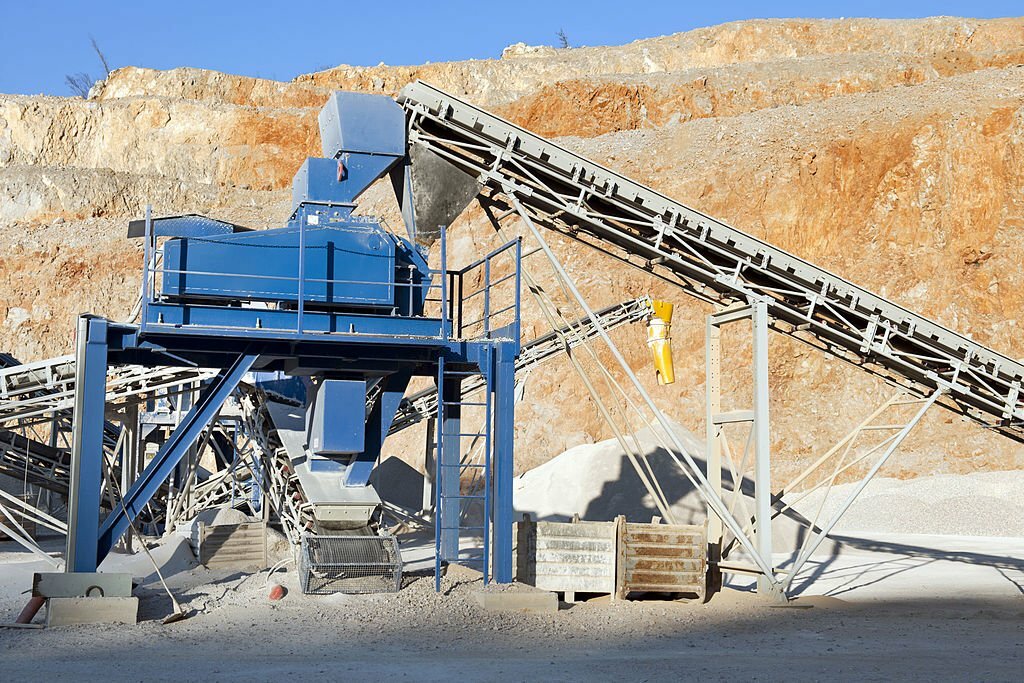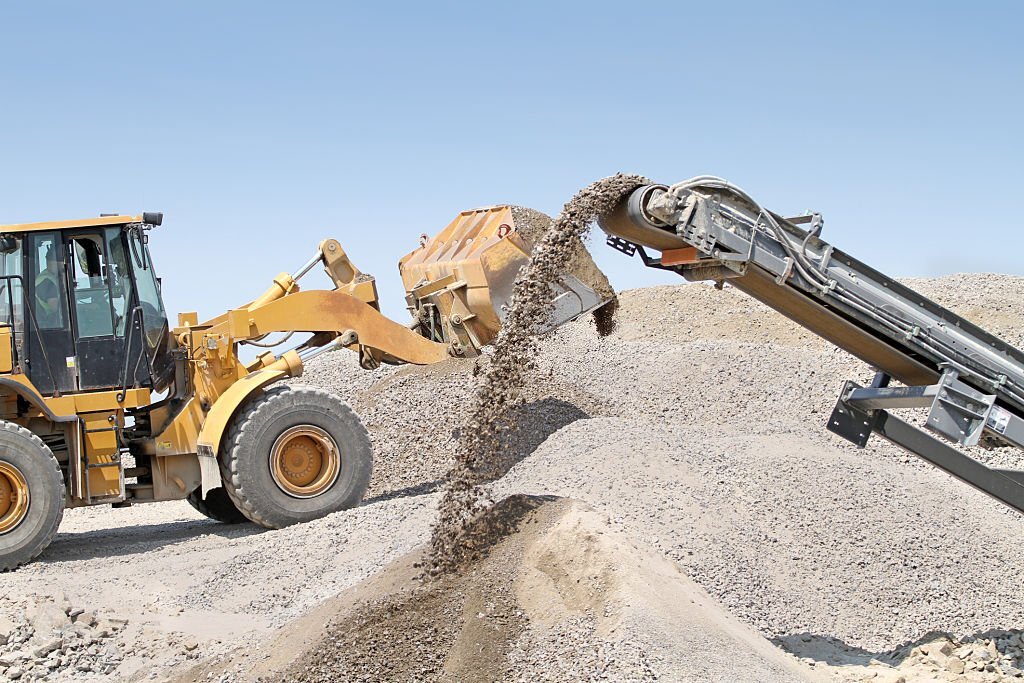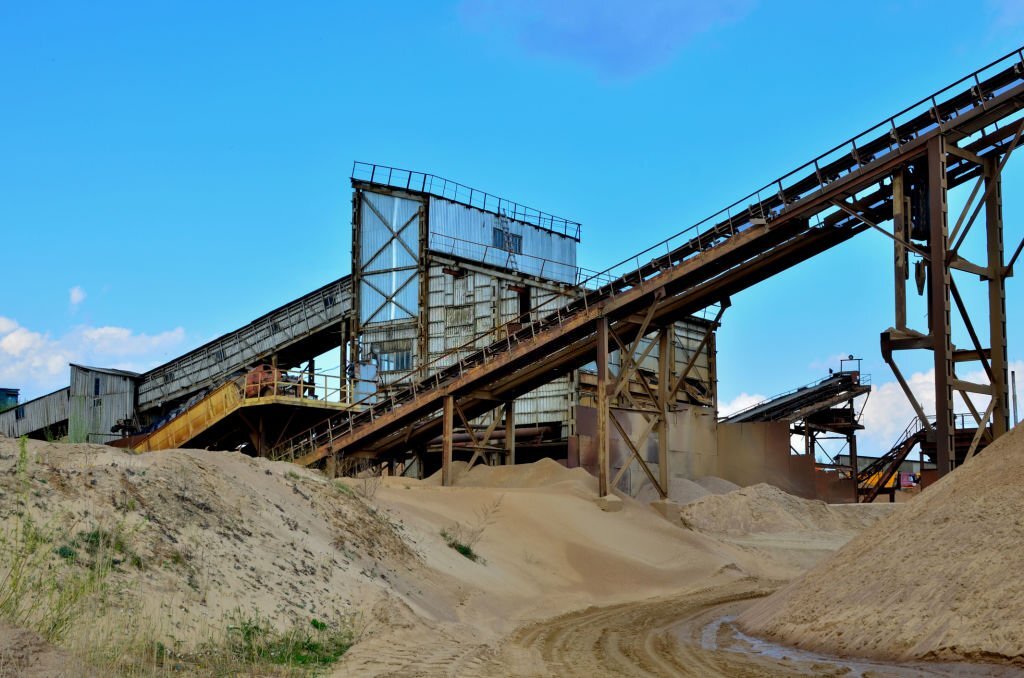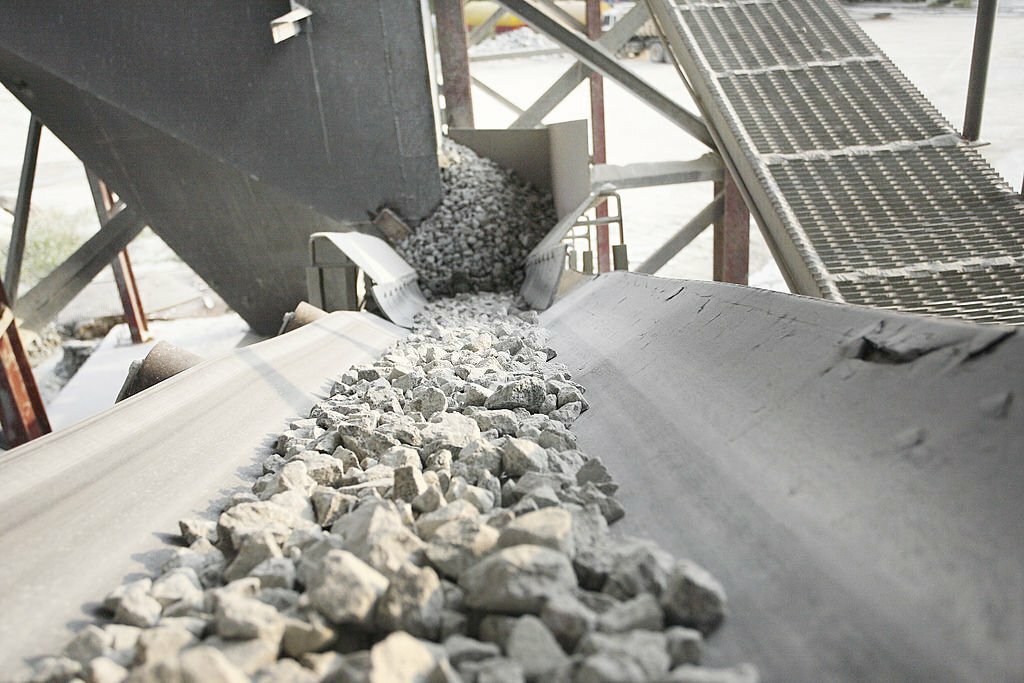
In the realm of industrial processes, the transformation of raw materials into valuable resources is a pivotal stage that shapes various industries. One such process, integral to industries like construction, mining, and metallurgy, is the operation of crushing plants. These specialized facilities play a crucial role in breaking down raw materials into smaller, manageable sizes, ultimately facilitating the production of essential materials for construction and manufacturing.
Primary Crushing: The Foundation of Material Processing
The primary crusher serves as the linchpin of every crushing plant, embodying a formidable machine meticulously crafted to tackle the Herculean task of disintegrating substantial rocks into more manageable fragments. Positioned at the forefront of the material processing journey, this initial stage stands as the gateway through which raw materials metamorphose into the essential building blocks of various industries. Be it the unyielding resilience of limestone, the enduring strength of granite, or the unique characteristics of diverse minerals, the primary crusher employs its robust jaws or cones to exert a colossal force.

This force acts as the catalyst for the transformative process, reducing the raw material to a size that aligns with the subsequent stages of material processing. It is within the jaws of the primary crusher that the very essence of the material’s composition is reshaped, paving the way for a cascade of subsequent processes that will ultimately yield refined resources vital for construction, manufacturing, and beyond. In essence, the primary crusher is the vanguard, setting in motion a series of events that shape the trajectory of raw materials on their journey to becoming indispensable components of our modern world.
Secondary Crushing: Refining the Material

After the inaugural stage of primary crushing, the material embarks on a consequential journey through the realm of secondary crushing, where refinement becomes paramount. Secondary crushers, frequently in the form of cone or impact crushers, assume the mantle in this phase, executing a precision dance to meticulously sculpt the material into a more specific and uniform size range. It is within the chambers of these secondary crushers that the raw material undergoes further reduction, shedding excess granularity and attaining the fine-tuned dimensions required for the subsequent stages of material processing. This pivotal stage transcends mere size reduction; it serves as the artisan’s chisel, shaping the raw material with finesse and intricacy. The quest for the desired end product specifications reaches its zenith here, as the secondary crushers act as the architects of uniformity in the processed material. The importance of this stage cannot be overstated, as it not only refines the physical dimensions but also contributes to the overall quality and functionality of the end product, ensuring that the material emerges from this phase ready to meet the stringent demands of diverse industrial applications.
Screening Process: Sorting the Grains
Following the intense crucible of crushing stages, the material undergoes meticulous scrutiny through the discerning eyes of the screening process. This crucial phase serves as the refining touch, delicately separating the finer particles from their coarser counterparts with surgical precision. At the heart of this operation lie vibrating screens or sieves, unsung heroes in the material processing narrative. These mechanical virtuosos perform a pivotal role, orchestrating a symphony of movements to ensure that the final product emerges with the impeccable credentials stipulated by industry specifications. However, screening transcends the mere act of size separation; it unfurls as a sophisticated art of material sorting.

The vibrating screens not only sift through particles based on their sizes but also engage in a nuanced dance of categorization, sorting materials according to their unique characteristics. This discerning process contributes not only to the uniformity of the final product but also to its functional integrity, ensuring that each particle aligns harmoniously with the intended application. Thus, screening emerges as the silent curator, adding finesse and precision to the culmination of material processing, where the raw substance metamorphoses into a refined product ready to take center stage in the tapestry of industrial endeavors.
Crushing Circuit: A Coordinated Symphony

The intricate choreography of crushing unfolds within the harmonious framework of what is aptly termed a crushing circuit. This orchestrated symphony of stages, ranging from the initial strides in primary crushing to the refining nuances of secondary crushing and screening, delineates the blueprint for transforming raw materials into refined products. The crushing circuit stands as the architect of efficiency, meticulously crafting a seamless flow of materials that traverse its carefully delineated pathways. Its primary mission is to optimize efficiency, ensuring that each stage seamlessly transitions into the next, like a well-coordinated ballet. By doing so, the circuit becomes a guardian against bottlenecks, preventing any obstruction that might impede the continuous flow of materials through the transformative journey.
Within this circuitry, each component assumes a role akin to a vital instrument in an orchestra, contributing to the crescendo of material processing. The primary crusher sets the tempo, the secondary crusher refines the melody, and screening acts as the conductor, harmonizing the various notes into a symphony of refined materials. This orchestrated convergence of components is more than a mere mechanical process; it is an artful composition that culminates in the creation of a refined product, poised and ready for its pivotal role in the expansive landscape of industrial utilization. In essence, the crushing circuit is the architectural blueprint that transforms raw materials into the melodious harmony of refined products.
Quality Control and Environmental Considerations

Amidst the labyrinthine journey of material processing, a vigilant sentinel stands guard—quality control measures, the custodians of consistency and reliability in the final product. Every stage, from the initial crush to the delicate screening, undergoes meticulous scrutiny to ensure that the end product not only meets but exceeds stringent quality standards. This commitment to quality assurance is the bedrock upon which the reputation of crushing plants is built, fostering trust in the reliability of the materials they produce.
In tandem with this dedication to quality, modern crushing plants are evolving with a conscious nod to environmental sustainability. Recognizing their role in the broader ecosystem, these facilities integrate advanced technologies such as dust control systems and noise reduction measures. Dust, a byproduct of the crushing process, is harnessed and mitigated through innovative systems, curbing its impact on air quality and surrounding ecosystems. Simultaneously, noise reduction measures ensure that the symphony of industrial machinery operates at harmonious decibel levels, minimizing disruptions to both the natural environment and nearby communities.
Furthermore, the quest for eco-friendliness extends to efficient energy utilization, where crushing plants are designed with a keen eye on minimizing their carbon footprint. By embracing sustainable practices, these plants not only fulfill their industrial objectives but also strive to leave a minimal ecological footprint, underscoring a commitment to responsible and environmentally conscious manufacturing. In this way, crushing plants are not just architects of materials but also stewards of environmental harmony, harmonizing industrial progress with ecological responsibility.
Conclusion: Unveiling the Magic of Crushing Plants
In essence, crushing plants are the unsung heroes of numerous industries, transforming mountains of raw materials into the building blocks of modern infrastructure. From the initial bite of the primary crusher to the meticulous sorting in the screening process, each step is a testament to the precision and engineering excellence that goes into material processing. As technology advances, crushing plants continues to evolve, pushing the boundaries of efficiency, sustainability, and productivity in the quest for superior materials.
In conclusion, understanding the intricate process of material processing through crushing plants unveils the remarkable journey from rocks and minerals to the foundations of our constructed world.

